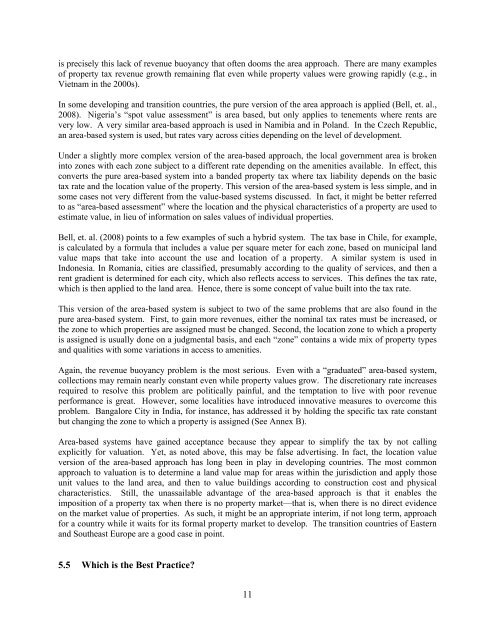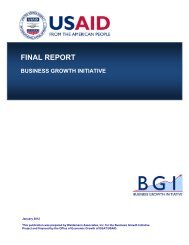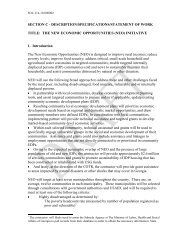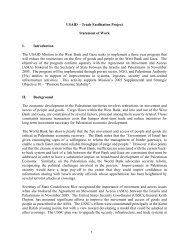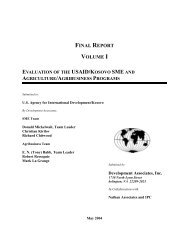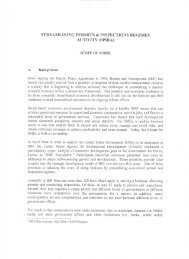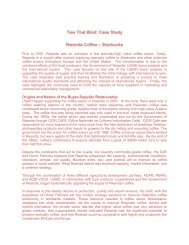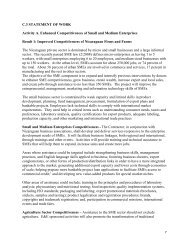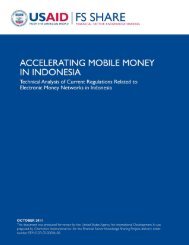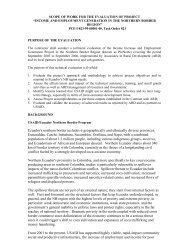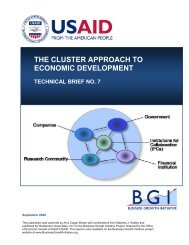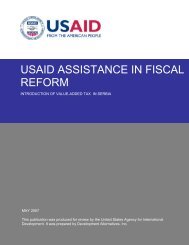Property Tax Reform in Developing and Transition Countries
Property Tax Reform in Developing and Transition Countries
Property Tax Reform in Developing and Transition Countries
Create successful ePaper yourself
Turn your PDF publications into a flip-book with our unique Google optimized e-Paper software.
is precisely this lack of revenue buoyancy that often dooms the area approach. There are many examples<br />
of property tax revenue growth rema<strong>in</strong><strong>in</strong>g flat even while property values were grow<strong>in</strong>g rapidly (e.g., <strong>in</strong><br />
Vietnam <strong>in</strong> the 2000s).<br />
In some develop<strong>in</strong>g <strong>and</strong> transition countries, the pure version of the area approach is applied (Bell, et. al.,<br />
2008). Nigeria’s “spot value assessment” is area based, but only applies to tenements where rents are<br />
very low. A very similar area-based approach is used <strong>in</strong> Namibia <strong>and</strong> <strong>in</strong> Pol<strong>and</strong>. In the Czech Republic,<br />
an area-based system is used, but rates vary across cities depend<strong>in</strong>g on the level of development.<br />
Under a slightly more complex version of the area-based approach, the local government area is broken<br />
<strong>in</strong>to zones with each zone subject to a different rate depend<strong>in</strong>g on the amenities available. In effect, this<br />
converts the pure area-based system <strong>in</strong>to a b<strong>and</strong>ed property tax where tax liability depends on the basic<br />
tax rate <strong>and</strong> the location value of the property. This version of the area-based system is less simple, <strong>and</strong> <strong>in</strong><br />
some cases not very different from the value-based systems discussed. In fact, it might be better referred<br />
to as “area-based assessment” where the location <strong>and</strong> the physical characteristics of a property are used to<br />
estimate value, <strong>in</strong> lieu of <strong>in</strong>formation on sales values of <strong>in</strong>dividual properties.<br />
Bell, et. al. (2008) po<strong>in</strong>ts to a few examples of such a hybrid system. The tax base <strong>in</strong> Chile, for example,<br />
is calculated by a formula that <strong>in</strong>cludes a value per square meter for each zone, based on municipal l<strong>and</strong><br />
value maps that take <strong>in</strong>to account the use <strong>and</strong> location of a property. A similar system is used <strong>in</strong><br />
Indonesia. In Romania, cities are classified, presumably accord<strong>in</strong>g to the quality of services, <strong>and</strong> then a<br />
rent gradient is determ<strong>in</strong>ed for each city, which also reflects access to services. This def<strong>in</strong>es the tax rate,<br />
which is then applied to the l<strong>and</strong> area. Hence, there is some concept of value built <strong>in</strong>to the tax rate.<br />
This version of the area-based system is subject to two of the same problems that are also found <strong>in</strong> the<br />
pure area-based system. First, to ga<strong>in</strong> more revenues, either the nom<strong>in</strong>al tax rates must be <strong>in</strong>creased, or<br />
the zone to which properties are assigned must be changed. Second, the location zone to which a property<br />
is assigned is usually done on a judgmental basis, <strong>and</strong> each “zone” conta<strong>in</strong>s a wide mix of property types<br />
<strong>and</strong> qualities with some variations <strong>in</strong> access to amenities.<br />
Aga<strong>in</strong>, the revenue buoyancy problem is the most serious. Even with a “graduated” area-based system,<br />
collections may rema<strong>in</strong> nearly constant even while property values grow. The discretionary rate <strong>in</strong>creases<br />
required to resolve this problem are politically pa<strong>in</strong>ful, <strong>and</strong> the temptation to live with poor revenue<br />
performance is great. However, some localities have <strong>in</strong>troduced <strong>in</strong>novative measures to overcome this<br />
problem. Bangalore City <strong>in</strong> India, for <strong>in</strong>stance, has addressed it by hold<strong>in</strong>g the specific tax rate constant<br />
but chang<strong>in</strong>g the zone to which a property is assigned (See Annex B).<br />
Area-based systems have ga<strong>in</strong>ed acceptance because they appear to simplify the tax by not call<strong>in</strong>g<br />
explicitly for valuation. Yet, as noted above, this may be false advertis<strong>in</strong>g. In fact, the location value<br />
version of the area-based approach has long been <strong>in</strong> play <strong>in</strong> develop<strong>in</strong>g countries. The most common<br />
approach to valuation is to determ<strong>in</strong>e a l<strong>and</strong> value map for areas with<strong>in</strong> the jurisdiction <strong>and</strong> apply those<br />
unit values to the l<strong>and</strong> area, <strong>and</strong> then to value build<strong>in</strong>gs accord<strong>in</strong>g to construction cost <strong>and</strong> physical<br />
characteristics. Still, the unassailable advantage of the area-based approach is that it enables the<br />
imposition of a property tax when there is no property market—that is, when there is no direct evidence<br />
on the market value of properties. As such, it might be an appropriate <strong>in</strong>terim, if not long term, approach<br />
for a country while it waits for its formal property market to develop. The transition countries of Eastern<br />
<strong>and</strong> Southeast Europe are a good case <strong>in</strong> po<strong>in</strong>t.<br />
5.5 Which is the Best Practice<br />
11


